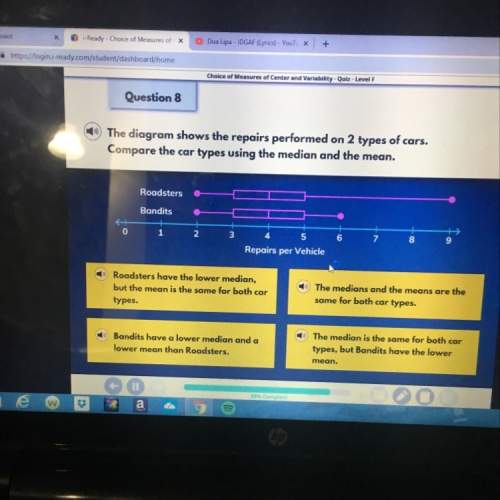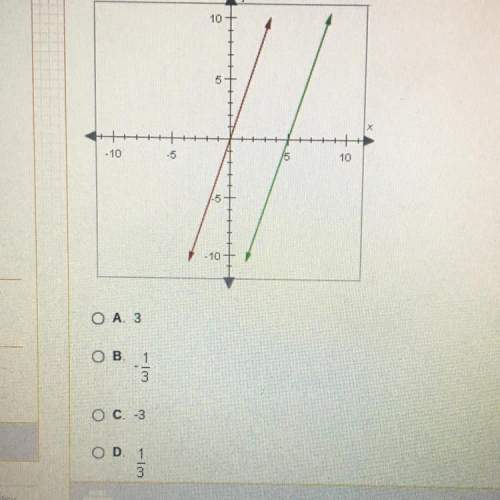
Mathematics, 06.06.2020 21:02 Wondersixeleven
Testing for homogeneity of variance Aa Aa A researcher wants to investigate claims that a new plant compound is effective in curbing appetite. She randomly assigns 14 rats to a treatment or control group (7 rats in each group). Rats in the treatment group are given the plant compound daily for a week, while rats in the control group are given a placebo. Over the course of the week, the researcher monitors the total number of calories consumed by all 14 rats. All the rats are kept separate from one another, but in their typical environments, for the duration of the week. The researcher's null hypothesis is that the rats given the plant compound consume the same number of calories as the rats given a placebo. Since the rats in the treatment group are independent of the rats in the control group, the researcher realizes that the design of her study is an independent-measures design. The researcher knows that the total calories consumed by a rat over the course of a week are normally distributed. However, the researcher is not sure that the variance (02) of the total calories consumed by a rat over the course of a week is the same regardless of whether the rat is given the plant compound or a placebo. Suppose the mean number of weekly calories consumed by the rats given the plant compound (the treatment group) is 790 with a standard deviation of 68, and the mean number of calories consumed by the rats in the control group is 875 with a standard deviation of 32.The researcher is unsure of which of the following required assumptions for the independent-measures t test? A. Are the observations within each group independent? B. Are the calories consumed by the rats in each group normally distributed? C. Are the control and treatment groups independent of one another? D. Is there homogeneity of variance? The researcher decides to use a Hartley's F. max test. The value of Fomax is Using the partial Critical Values for the Fmax Statistic table below, the critical value for the researcher's Fimax with a .01 is 6.94 9.9 k = Number of Samples n-1 2 3 9.60 15.5 23.2 37.0 7.15 10.8 14.9 22.0 5.82 8.38 11.1 15.5 4.99 8.89 12.1 4.43 6.00 7.50 4.03 5.34 6.54 8.5 3.72 4.85 5.85 7.4 3.28 4.16 4.91 2.86 3.54 4.07 4.9 2.46 2.95 3.32 Given the results of the F-max test, the researcher's conclusion is that the data suggest the homogeneity of variance assumption has been violated the data do not provide evidence that the homogeneity of variance assumption has been violated Can you still use the independent-measures t test if the homogeneity of variance assumption is violated? A. Yes, you don't use a pooled variance and you recompute the degrees of freedom so that the resulting df is larger. B. Yes, you don't use a pooled variance and you recompute the degrees of freedom so that the resulting df is smaller. C. No, you cannot use the independent-measures t test.

Answers: 2


Another question on Mathematics

Mathematics, 21.06.2019 14:00
How can you find the conditional probability of a given b as the fraction of b’s outcomes that also belong to a, and interpret the answer in terms of the model? i just need a good explanation
Answers: 2

Mathematics, 21.06.2019 20:00
The table shows the age and finish time of ten runners in a half marathon. identify the outlier in this data set. drag into the table the ordered pair of the outlier and a reason why that point is an outlier.
Answers: 1

Mathematics, 21.06.2019 20:30
Solve each quadratic equation by factoring and using the zero product property. n^2 - 49 = 0
Answers: 2

Mathematics, 21.06.2019 22:40
Select the point that is a solution to the system of inequalities. y< =-x+3 y=x^(2)-3x
Answers: 3
You know the right answer?
Testing for homogeneity of variance Aa Aa A researcher wants to investigate claims that a new plant...
Questions


Mathematics, 20.09.2020 05:01


Mathematics, 20.09.2020 05:01

Geography, 20.09.2020 05:01


Biology, 20.09.2020 05:01

Biology, 20.09.2020 05:01

Mathematics, 20.09.2020 05:01

Geography, 20.09.2020 05:01



Mathematics, 20.09.2020 05:01


History, 20.09.2020 05:01

History, 20.09.2020 05:01



Mathematics, 20.09.2020 05:01





